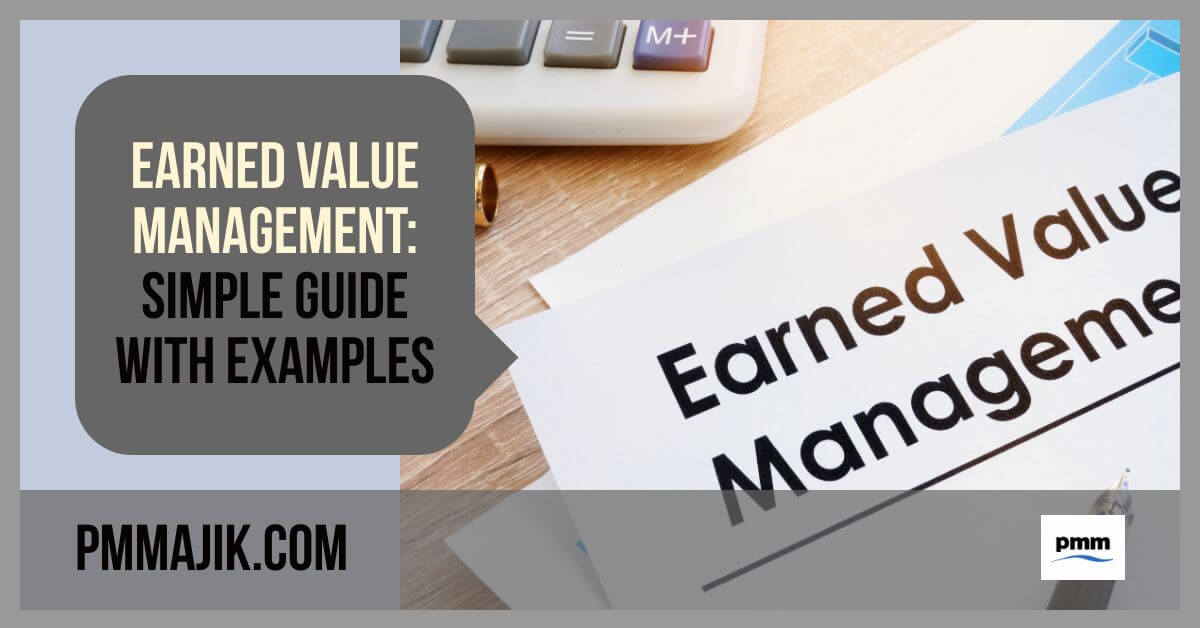In the last article, Guide: PMO and Project Metrics, it discussed the importance of metrics and gave an overview of some popular metrics that can be used to measure project impact.
This article will explore Earned Value Management in more detail.
Earned value management (EVM) focusses on the value of a project, and specifically, that the value is equal to the funds that have been budgeted for its completion.
EVM is a valuable tool to use to assess the budget or schedule of a project. Simply comparing actual expenditure against the budget will not give the specific information about the whether the project is under, on or above schedule/budget.
The schedule and cost performance throughout the life of the project should be assessed using the following information.
Planned Value
Also known as the budgeted cost of work scheduled (BCWS), planned value represents the approved budget for the work scheduled to be completed by a set date. The total planned value should match the amount that has been budgeted for the project, also referred to as budget at completion (BAC)
Formula: Planned value (PV) = (Planned % complete) x (BAC)
Example: A project of 6 months duration at a total budgeted cost of £10,000 should be 50% completed.
50/100 x £10,000 = £5,000 (PV)
Earned Value
Sometimes referred to as the budgeted cost of work performed (BCWP), earned value constitutes the approved budget for the work which has actually been completed by a set date.
Formula: Earned value (EV) = % of completed work x BAC
Example: A project of 6 months duration at a total budgeted cost of £10,000 is 3 months in and has a spend of £6000. On review, only 40% of the work has been completed to date.
The earned value is 40% of the total work.
40% x £10,000 = £4000 (EV).
Actual Cost
The costs that are incurred for work that has been completed by a set date is known as the actual cost. They are also sometimes referred to as the actual cost of work performed (ACWP).
Formula: There isn’t actually a formula for actual cost, it is simply the amount that has been spent.
Example: If £6000 has been spent on the project to date, then the actual cost is £6000.
Schedule Variance
Schedule variance identifies whether the project is on, ahead or behind schedule by measuring the difference between the amount budgeted for the work that was actually completed, compared with the work that was planned.
Formula: Schedule variance = earned value – planned value
Example: From our example above:
£4000 (EV) – £5000 (PV) = -£1000
Where the variance is negative, the project is behind schedule. If the variance is positive, then the project is ahead of schedule.
Cost Variance
Cost variance is used to identify whether the project is on, over or under budget by calculating the difference between the amount that was budgeted compared with the amount that was actually spent undertaking the project.
Formula: Cost variance = earned value – actual cost.
Example: Again, from our working example, let’s say that £6000 is the actual cost.
£4000 (EV) – £6000 (AC) = -£2000
Where the variance is negative, the project is over budget. If the variance is positive, then the project is under budget.
Schedule Performance Index
The schedule performance index is used to show the relative amount that the project is behind or ahead of schedule and is also known as the project’s schedule efficiency. It is achieved by calculating the ratio of the approved budget for the work that has been completed to the approved budget for the work still to complete.
Formula: Schedule performance index = Earned value / planned value
Example: £4000 (EV) / £5000 (PV) = 0.8
Where the performance index is less than one, the project is behind schedule. If the performance index is above one, then the projects is ahead of schedule.
Cost Performance Index
Similar to the schedule performance index, the cost performance index is reached by calculating the ratio of the approved budget for the work that has been completed to what was actually spent undertaking the work, in relative terms. It is also known as the project’s cost efficiency and is a valuable tool to project the cost performance for the remainder of the project.
Formula: Cost performance index = Earned value / Actual cost
Example: £4000 (EV) / £6000 (AC) = 0.67
As a result, this shows that 67p is being earned for every £1 spent, thus the project is over budget. If the cost performance index is over one, then the project is under budget.
Using Earned Value Management is a good way to evaluate projects on a like for like basis. This is especially important when you need to prioritise spend and determine what projects to stop (see How to evaluate what projects to stop).






